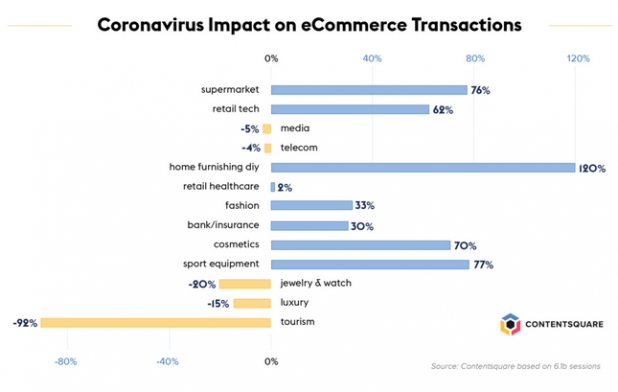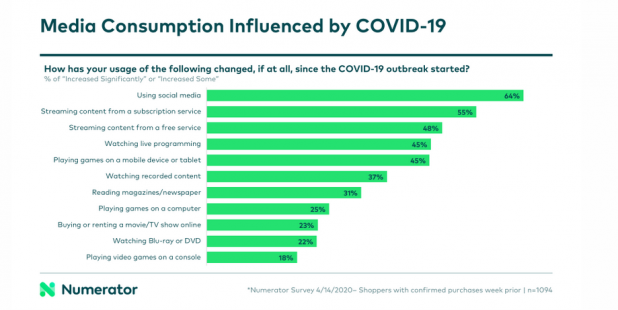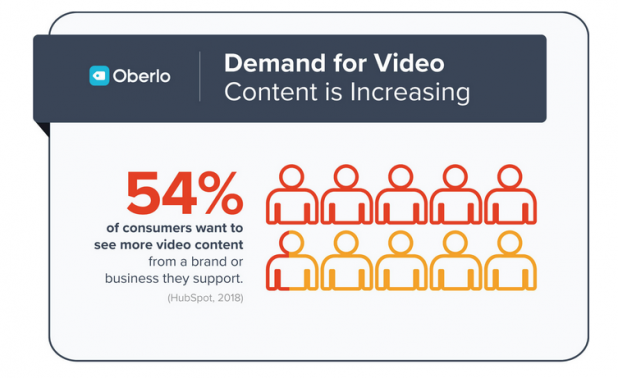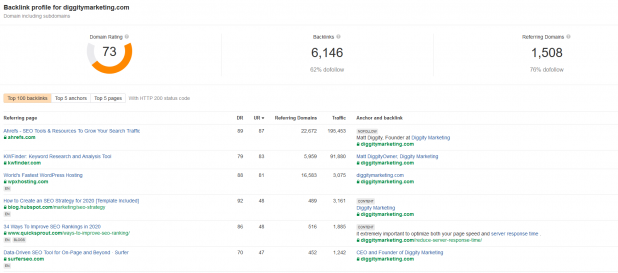posted on May 30, 2021

Image Source: Pexels.com
We are living in a changed world. The COVID-19 (Coronavirus) pandemic has had an enormous impact on every aspect of the way we live and work, and the full extent of its consequences are not yet known. Many brick and mortar stores, along with other non-essential businesses, have been closed for an extended period.
Few industries have been spared from the impact of COVID-19, including affiliate marketing, which has seen both positive and negative effects. Many consumers are watching their spending, and longer delivery times and supply chain disruptions have a knock-on effect. Many affiliate networks, notably Amazon, have slashed commission rates.
However, other areas of the affiliate marketing industry have enjoyed a positive impact. Demand for certain products has increased dramatically, and more people are shopping online than ever before. This increased demand and the potential for affiliate marketers to reach new customers has resulted in some experiencing an unexpected boom in their income.
How to scale your affiliate marketing in the era of COVID-19
If you’re worried about the impact of the pandemic on your business and your income, you’re not alone. Depending on your industry and niche, you may indeed see a dip in revenue over the next few months.
First: don’t panic!
In this section, I’ll share some of the best ways to keep the money rolling in and position yourself to continue to thrive when the pandemic is over. Read on to learn how you can maintain and grow your affiliate marketing income.
Find Alternatives to Amazon
Many affiliate marketers rely on Amazon for their income. This makes sense due to the ubiquity of Amazon, as well as its range of products and competitive prices. However, as I mentioned previously, Amazon has cut affiliate commissions – and many of them were at the lower end to begin with. For example, the affiliate commission rate for home improvement products and furniture was slashed from 8% to 3% in April.
If your affiliate income comes mainly or entirely from Amazon, it’s time to consider other options. You don’t have to ditch Amazon completely – it will still be many people’s go-to for their purchases. But take the time to explore alternatives and other affiliate networks.
Some of the best affiliate networks outside of Amazon include ShareASale, Clickbank, and Rakuten. Which ones will be best for you depends on your niche. Take your time to research the various options, and don’t be afraid to switch if you try one and it doesn’t work for you.
Research the most profitable niches
As our lives have changed, so have our shopping habits. Here are just a few of the e-commerce categories which have seen an increase in sales as a direct result of COVID-19:

Essentially, what we’re seeing is an increase in spending for activities that you can do in the home. This covers things ranging from exercise equipment through to arts and entertainment, adult products, furniture, and things for the garden.
If you’re already active in one of these niches, then you’re probably already profiting from increased spending. That’s obviously great for you.
There could be the opportunity for you to promote products in these niches. Of course, the products you’re selling must be relevant to your content. There is probably no point in plugging web development tools if you run a travel blog, for example! But if you think creatively, you might be able to expand the products or services you promote in a way that will still resonate with your audience.
Scale Your PPC
You might also wish to explore different niches entirely. If you take this route, you’ll need to look at paid advertising options such as pay-per-click (PPC.) This is because it can take weeks or months to get new content ranking highly in search results with SEO alone.
Pivoting into a different niche might be the best option for you, depending on your circumstances. But be aware that there will be some advertising costs involved.
Even if you’re staying within the same niche, this is a great time to start or scale up your PPC. Falling advertising spending due to the pandemic means you’ll get more bang for your buck if you can afford it. If you’re new to PPC, don’t be afraid to give it a go.
Here’s the process you’ll need to follow to get started:
- Choose a PPC network. There are many to choose from, with different benefits and drawbacks, but I recommend starting with Google Ads or Facebook PPC.
- Choose the right keywords. You’ll want to focus on a mix of short tail (generic) and long tail (longer and more specific) keywords. The best keywords are high-volume, low-competition, which means that a lot of people are searching for them but few businesses are trying to rank for them. You can use the Keywords Everywhere plugin to help you find the best keywords to use.
- Create your content. You’ll need fantastic copy and visual assets for your ad, as well as a stellar landing page to encourage conversions.
- Decide how much you want to spend and set your budget. Start out with a small amount and scale from there.
- Monitor the progress of your ad campaign and your results.
Don’t worry if you don’t get it right straight away! If something isn’t working, you can always tweak your ad and try again. The low costs at the moment mean it’s less of a risk to try it out and see what happens.
As well as using PPC to make affiliate sales, you can also use it to grow your email list. Once visitors click your ad, you should give them a quick and easy way to sign up for your mailing list on your landing page. You can even offer a lead magnet, such as a free ebook, whitepaper, or a discount code, to encourage them to give their email address. By building your email list, you’re laying the groundwork for growth later.
Improve Your Content & Optimize User Flow
People are at home more than ever, and as a result, many of us are spending significantly more time online. That means it’s the perfect time to focus on improving your content, getting it to rank more highly, and optimizing your user flow to get more clicks on your affiliate links.
When creating content, you need to make sure you’re providing value to your audience and giving them what they’re looking for. Look closely at your analytics and use Google Search Console to see what search terms people are using to find you. If a significant number of people have found you through the same or similar keywords, that strongly indicates a topic you should be focusing on.
Aim to inform, advise, inspire, or entertain with every piece of content you produce. Reviews, product or service comparisons, round-ups, and how-to articles are all valuable forms of affiliate marketing content.
Don’t forget to continually optimize your content for search engines and take into account the customer journey. You will only see growth as a result of your content strategy if you can get your content to rank.
The user flow is the process through which visitors navigate your website. This process should be as easy and painless as possible. If you make it overly difficult or complicated, most users will just leave and not come back.
Here’s an example of a user flow diagram. I recommend mapping yours out in a similar way:

Once you’ve mapped out your customer’s journey through your website, here are some of the ways you can optimize your user flow:
- Place an intuitive and easy-to-use menu in an obvious place. The user should be able to quickly find where they want to go.
- Identify chokepoints. At what point do a lot of people leave your site? Chokepoints are indicative of a problem with that page or step of the journey, so investigate and see what barriers you can remove.
- Optimize for improved page speed. Pages that load too slowly are one of the main causes of high bounce rate.
- Hold their attention! Too many options or internal links will confuse your visitors and most likely send them away from where you want them to be. Condense and simplify.
- Use an exit intent opt-in form. An exit intent form pops up when a visitor clicks to leave your site. If you offer a compelling freebie or special offer, you can get them to give you their email address before they go.
Fantastic, useful content and an intuitive user flow are two of the most critical factors in getting your visitors to stick around and click on those affiliate links.
Utilize social media
According to a study by Numerator, 64% of adults said that their use of social media had “increased some” or “increased significantly” since the COVID-19 outbreak began:

Therefore, you can’t afford to ignore social media in your affiliate marketing strategy. Ensure you share your content across the main channels, paying attention to where you get the most engagement and scaling activity on those platforms.
Include images, infographics, video, and audio in your social media posts. According to Venngage, content with images enjoys 180% more engagement. Demand for video content is also increasing:

Use a mix of organic and paid reach, if possible. You have to spend money to make money, as the saying goes! The most important things are to know your audience so that you can target the right people, create killer content, and include a clear and prominent call to action.
Look for guest posting opportunities
Guest posting refers to providing a piece of content for someone else’s site or blog. In return, you get a link back to your site. This has two main benefits. First, you build a profile of quality backlinks, which affects your ability to rank highly in search engine results. And second, you introduce your content to new readers via the host site’s audience.
To find sites to approach for guest posts, use Ahrefs’ backlink checker. Search for a high-ranking site in your niche and see which websites are linking to it. Here are the results when I search for my site, Diggity Marketing:

Pay attention to the Domain Authority or Domain Rating (DR) and aim for those with a score of 50 or higher. Send a friendly introductory email to the site owner and ask if they’d be open to accepting a guest post. Guest posting takes time and effort but will be hugely beneficial to your SEO and, ultimately, to your affiliate marketing efforts.
A word of warning: promote ethically
People are, understandably, very sensitive to how business owners and marketers behave during this crisis. The last thing you want is to be seen as callously capitalizing on the disaster.
Avoid language which plays on people’s fear or is likely to induce panic. You should also avoid cashing in on promoting hard-to-get essential items such as hand sanitizer, face masks, or medical supplies.
Thriving in the new normal
Savvy marketers can continue thriving in the wake of the COVID-19 pandemic. Whether you’ve seen a dip in your income and are ready to get back on track or you want to use the recent e-commerce boom to scale your efforts, I hope the tips in this article will help you get closer to your goals.
Remember my top tips:
- Explore the most profitable niches and consider how you could authentically promote them.
- Focus on providing high-quality, valuable content that will entice people back to your site again and again.
- Use social media to its full potential, including a mix of organic and paid content.
- Boost your SEO by seeking out guest post opportunities which will drive new traffic to your website and grow your backlink profile.
Whatever strategies you employ, make sure you’re behaving ethically – the goal is to weather this storm, not exploit it for short-term gain. If you focus on content and provide the value your audience is looking for, you’ll not only scale your affiliate marketing business in the time of COVID-19 but lay the groundwork for ongoing success.
 NetApp sees seven important trends for 2022 in the areas of data, cloud computing, artificial intelligence (AI), cybersecurity, and quantum computing.
NetApp sees seven important trends for 2022 in the areas of data, cloud computing, artificial intelligence (AI), cybersecurity, and quantum computing.  NetApp sees seven important trends for 2022 in the areas of data, cloud computing, artificial intelligence (AI), cybersecurity, and quantum computing.
NetApp sees seven important trends for 2022 in the areas of data, cloud computing, artificial intelligence (AI), cybersecurity, and quantum computing. 

 In 2021, AMS-IX exchanged around 26,85 Exabytes of data, an increase of 18% over 2020. The increase is considerable, but it is less than the 35 percent increase predicted for ‘Corona year’ 2020.
In 2021, AMS-IX exchanged around 26,85 Exabytes of data, an increase of 18% over 2020. The increase is considerable, but it is less than the 35 percent increase predicted for ‘Corona year’ 2020.  The 2022 Conference Program has been announced by Data Center World, a global conference for data center facilities and IT professionals.
The 2022 Conference Program has been announced by Data Center World, a global conference for data center facilities and IT professionals.  Demand for traditional IT system management has plummeted as firms rush to the cloud in the wake of the corona outbreak. As a result, international IT services giant Atos saw its organic revenue fell by as much as 15%, an unprecedented blow.
Demand for traditional IT system management has plummeted as firms rush to the cloud in the wake of the corona outbreak. As a result, international IT services giant Atos saw its organic revenue fell by as much as 15%, an unprecedented blow.  As COVID-19 moved life into the online world, the amount of data skyrocketed. Between February and mid-April 2020, global Internet traffic increased by nearly 40% due to the rise of video streaming, video conferencing, online gaming and social networking. Read the Expert Blog by Jordy Kleemans
As COVID-19 moved life into the online world, the amount of data skyrocketed. Between February and mid-April 2020, global Internet traffic increased by nearly 40% due to the rise of video streaming, video conferencing, online gaming and social networking. Read the Expert Blog by Jordy Kleemans 





 The global security-as-a-service market is speculated to cross a valuation of USD 10.4 billion in 2021 and as per the projections, it will grow at a CAGR of 17% during the forecast period till 2030.
The global security-as-a-service market is speculated to cross a valuation of USD 10.4 billion in 2021 and as per the projections, it will grow at a CAGR of 17% during the forecast period till 2030.  The global virtual private server (VPS hosting) market is expected to reach $8.38 Billion by 2026, according to Allied Market Research.
The global virtual private server (VPS hosting) market is expected to reach $8.38 Billion by 2026, according to Allied Market Research. 
